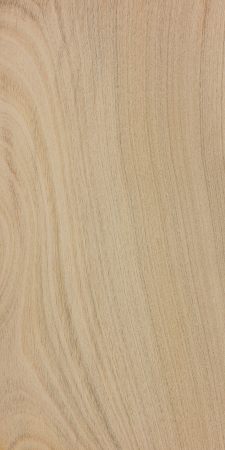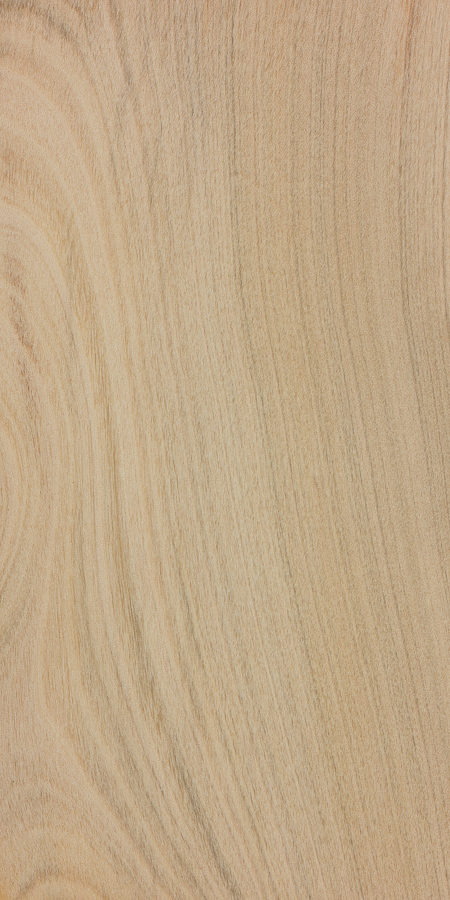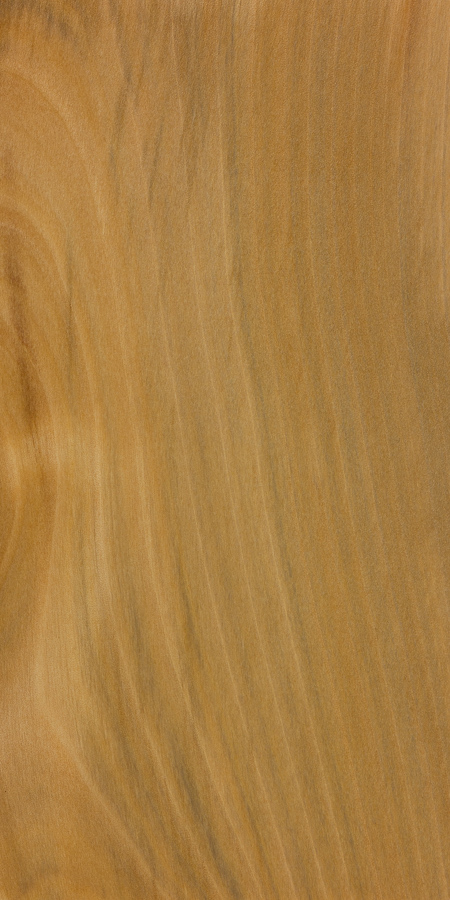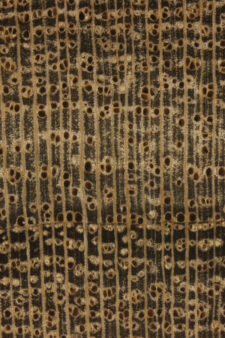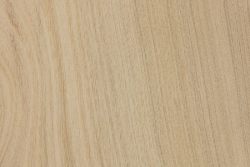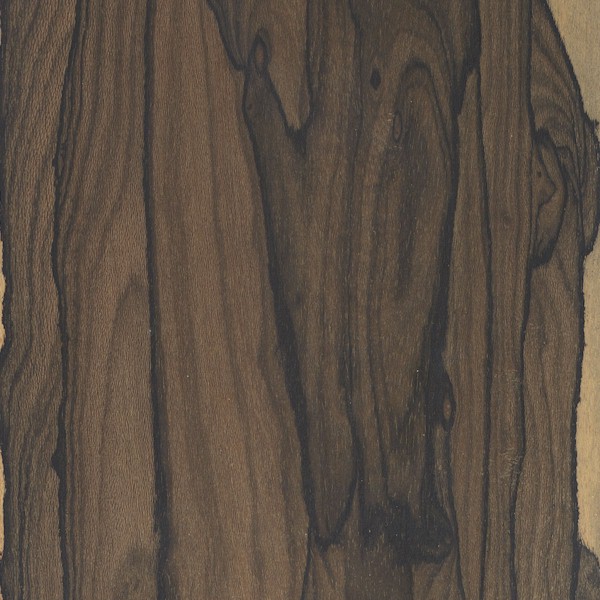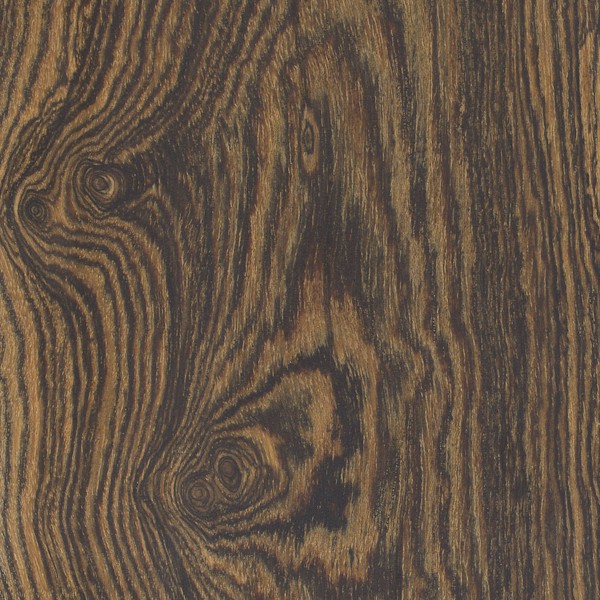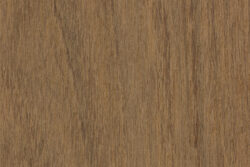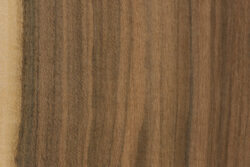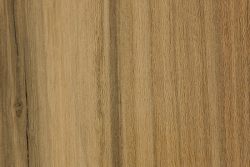DATA SOURCE(S): 1,26,27,32,33,34
Common Name(s): Laurel blanco, canalete, salmwood
Scientific Name: Cordia alliodora
Distribution: Southern Mexico southward to tropical South America
Tree Size: 100-120 ft (30-37 m) tall,
2-3 ft (.6-1 m) trunk diameter
Average Dried Weight: 37.2 lbs/ft3 (565 kg/m3)
Specific Gravity (Basic, 12% MC): .48, .57
Janka Hardness: 890 lbf (3,970 N)
Modulus of Rupture: 12,570 lbf/in2 (86.7 MPa)
Elastic Modulus: 1,874,000 lbf/in2 (12.93 GPa)
Crushing Strength: 6,670 lbf/in2 (46.0 MPa)
Shrinkage: Radial: 3.8%, Tangential: 6.3%,
Volumetric: 9.8%, T/R Ratio: 1.7
Color/Appearance: Heartwood color ranges from light yellowish to medium golden brown, sometimes with darker streaks. Lighter portions of heartwood aren’t always clearly demarcated from sapwood.
Grain/Texture: Grain is straight to shallowly interlocked. Medium uniform texture with good natural luster.
Rot Resistance: Rated as moderately durable, though heartwood with darker color may have above average rot resistance. Reported to have good resistance to termites, but poor resistance to marine borers.
Workability: Easy to work with hand or machine tools. Glues, stains, and finishes well. Good dimensional stability.
Odor: Generally indistinct, though darker-colored pieces can have a spicy scent when being worked.
Allergies/Toxicity: Although severe reactions are quite uncommon, laurel blanco has been reported as a sensitizer. Usually most common reactions simply include skin irritation. Sawdust has also been reported to cause dry hands, as well as excessive thirst. See the articles Wood Allergies and Toxicity and Wood Dust Safety for more information.
Pricing/Availability: Not commonly exported outside its natural range. Veneer, craft blanks, and/or small craft lumber may be seen on an occasional basis. Expect prices to be in the mid-range for an imported hardwood.
Sustainability: This wood species is not listed in the CITES Appendices, and is reported by the IUCN as being a species of least concern. Laurel blanco is also considered an invasive species in areas where it has been previously introduced as a plantation species, such as Tanzania.[1]Edward, E., Munishi, P. K., & Hulme, P. E. (2009). Relative roles of disturbance and propagule pressure on the invasion of humid tropical forest by Cordia alliodora (Boraginaceae) in … Continue reading
Common Uses: Veneer, furniture, cabinetry, boatbuilding, and millwork.
Comments: Cordia alliodora is sometimes grouped with other Cordia species that have similar light brown coloration and sold as laurel blanco—in contrast to the darker, heavier Cordia species sometimes called laurel negro (Spanish for white laurel and black laurel, respectively). Other lightweight species grouped as laurel blanco include freijo (C. goeldiana) and afata (C. trichotoma).
These lighter-colored species are in contrast to the more commercially popular and exotic woods in the genera which have a higher density and more dramatic coloration, namely bocote (C. elaeagnoides) and ziricote (C. dodecandra).
Images: Drag the slider up/down to toggle between raw and finished wood.
Identification: See the article on Hardwood Anatomy for definitions of endgrain features.
Porosity: diffuse porous (sometimes semi-ring-porous)
Arrangement: solitary and radial multiples
Vessels: large, few; tyloses occasionally present
Parenchyma: vasicentric
Rays: medium width; normal to wide spacing
Lookalikes/Substitutes: There are a few moderate-weight Cordia species that are sometimes sold interchangeably with C. alliodora. This includes C. goeldiana and C. trichtoma.
Notes: There are also a few African species with similar characteristics, including C. africana, C. millenii, and C. platythyrsa.
Related Content:
References[+]
| ↑1 | Edward, E., Munishi, P. K., & Hulme, P. E. (2009). Relative roles of disturbance and propagule pressure on the invasion of humid tropical forest by Cordia alliodora (Boraginaceae) in Tanzania. Biotropica, 41(2), 171-178. |
|---|

